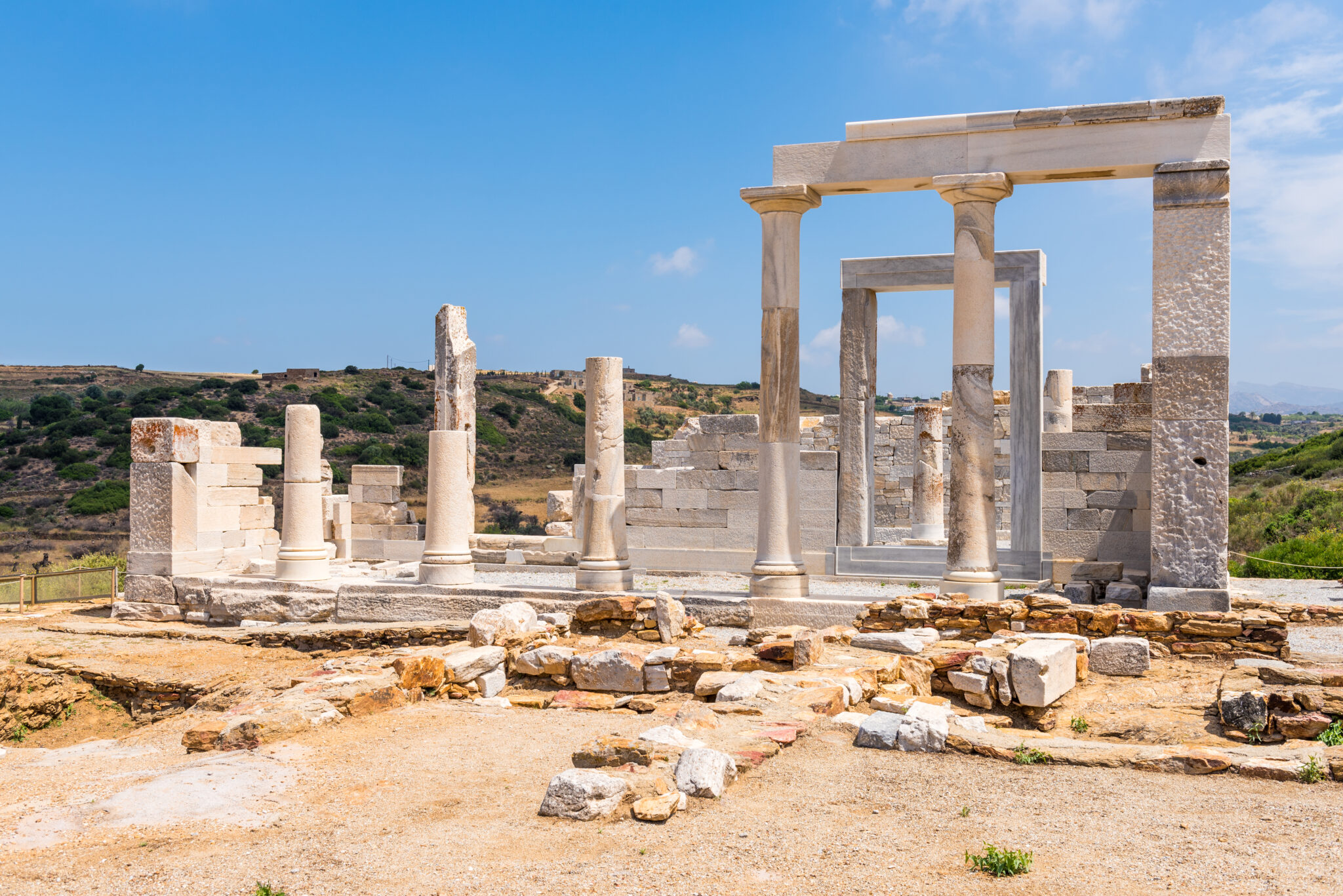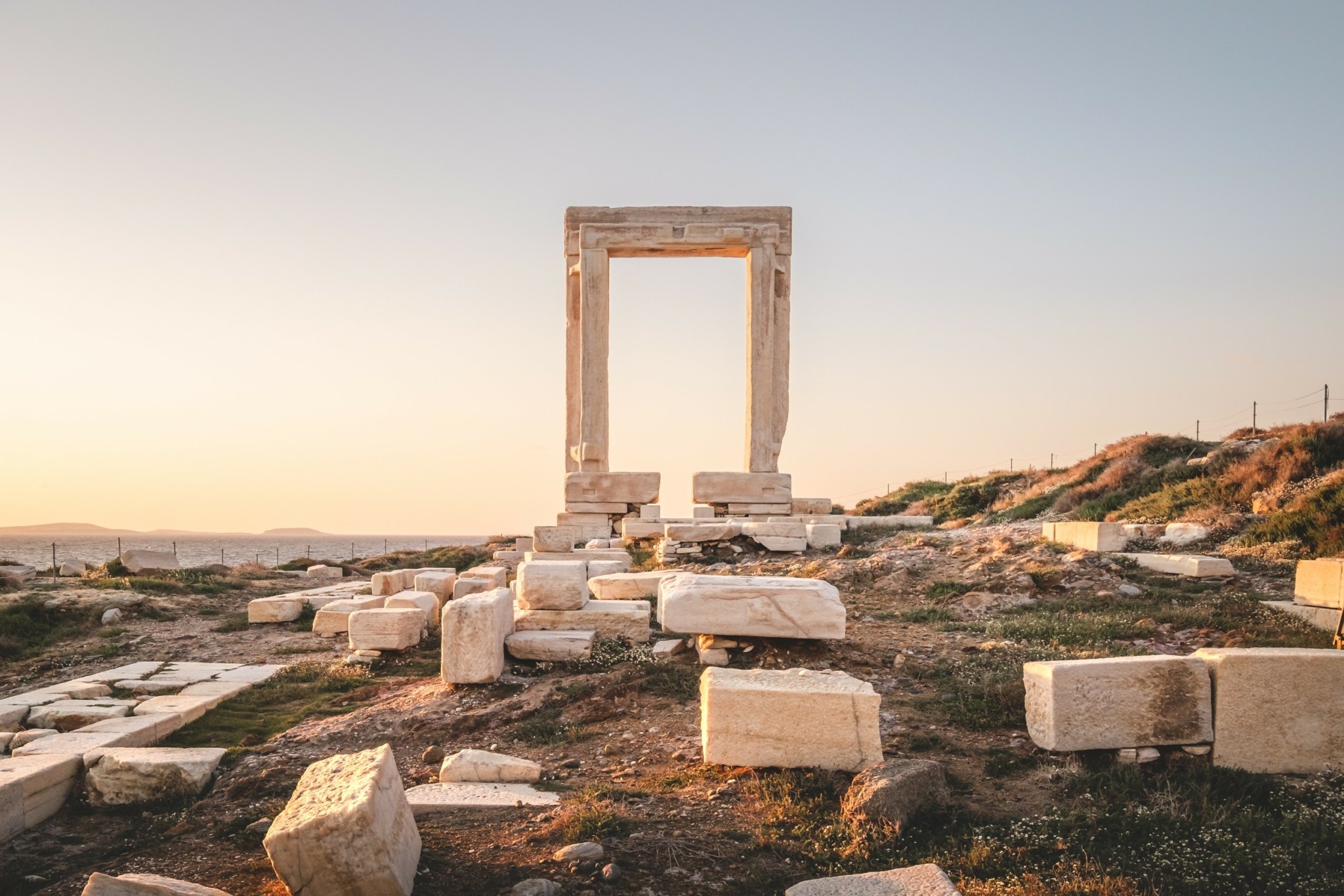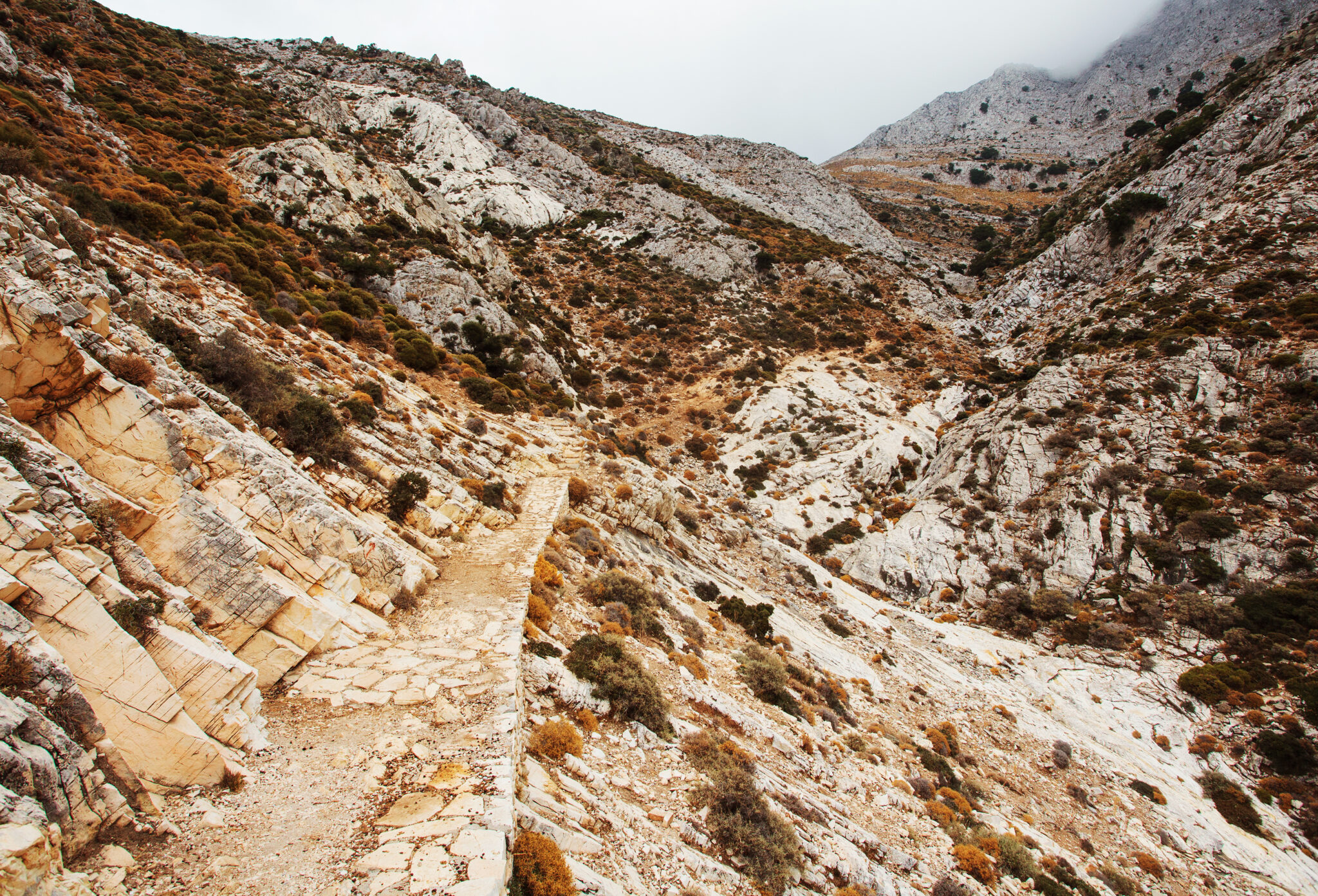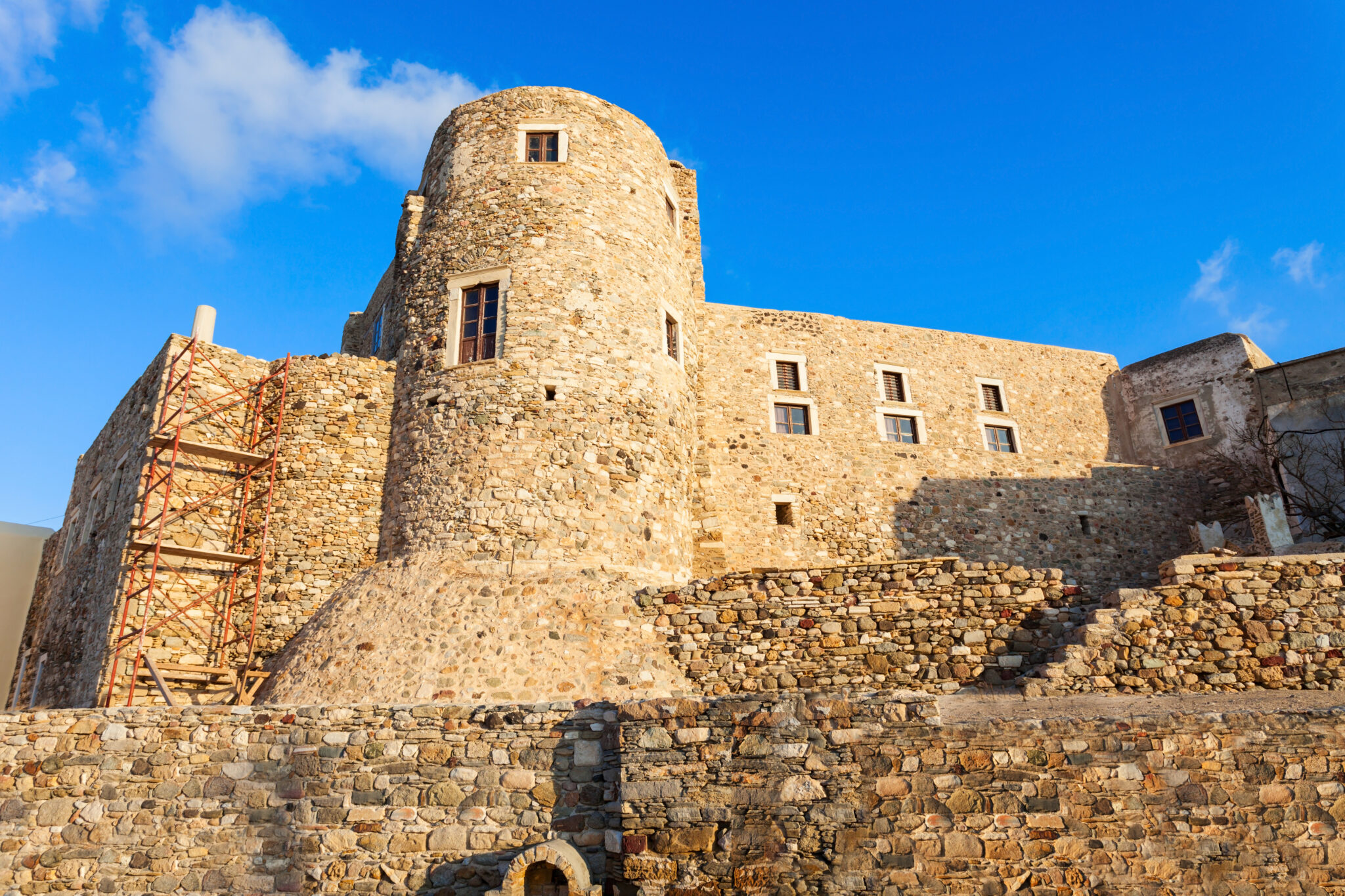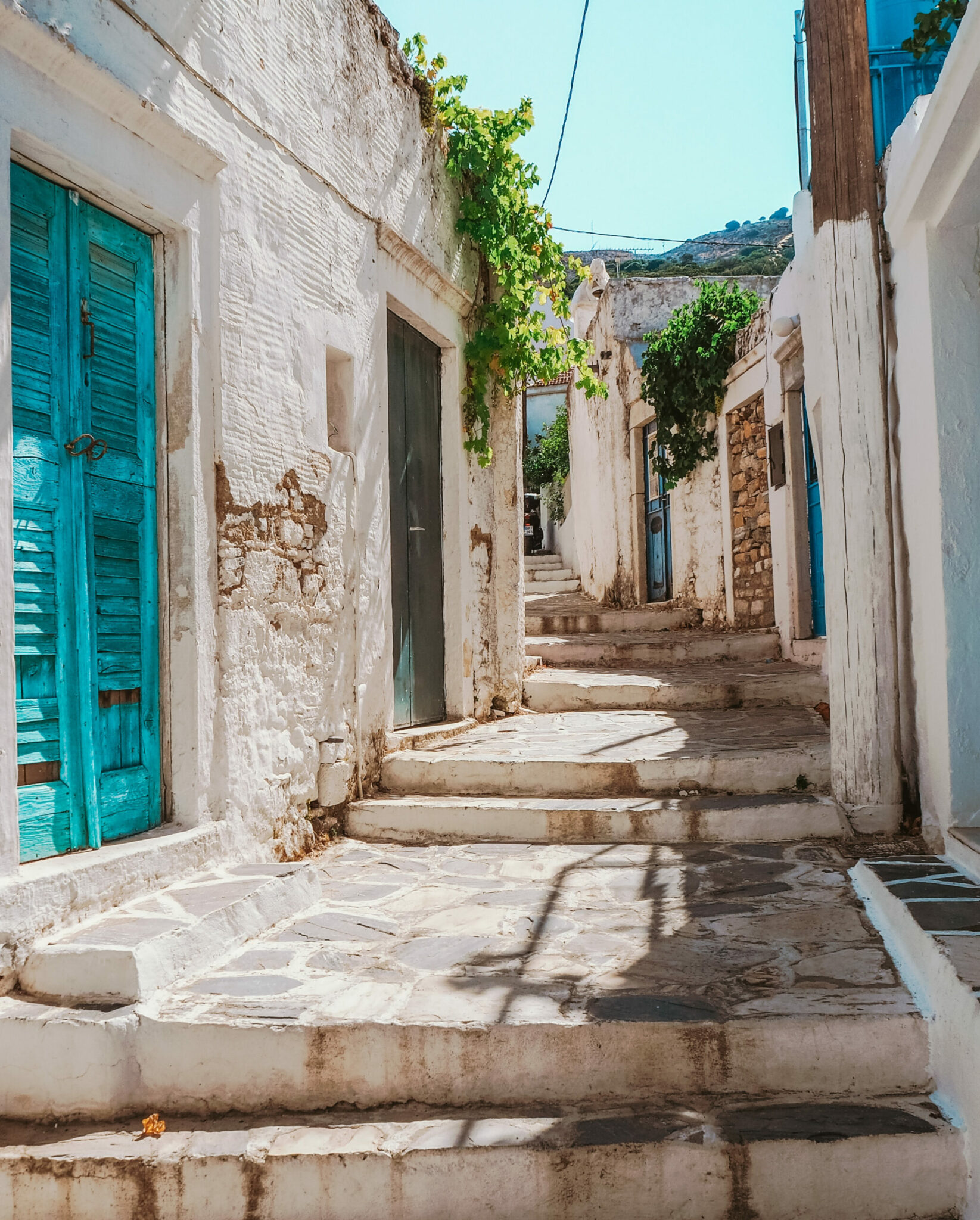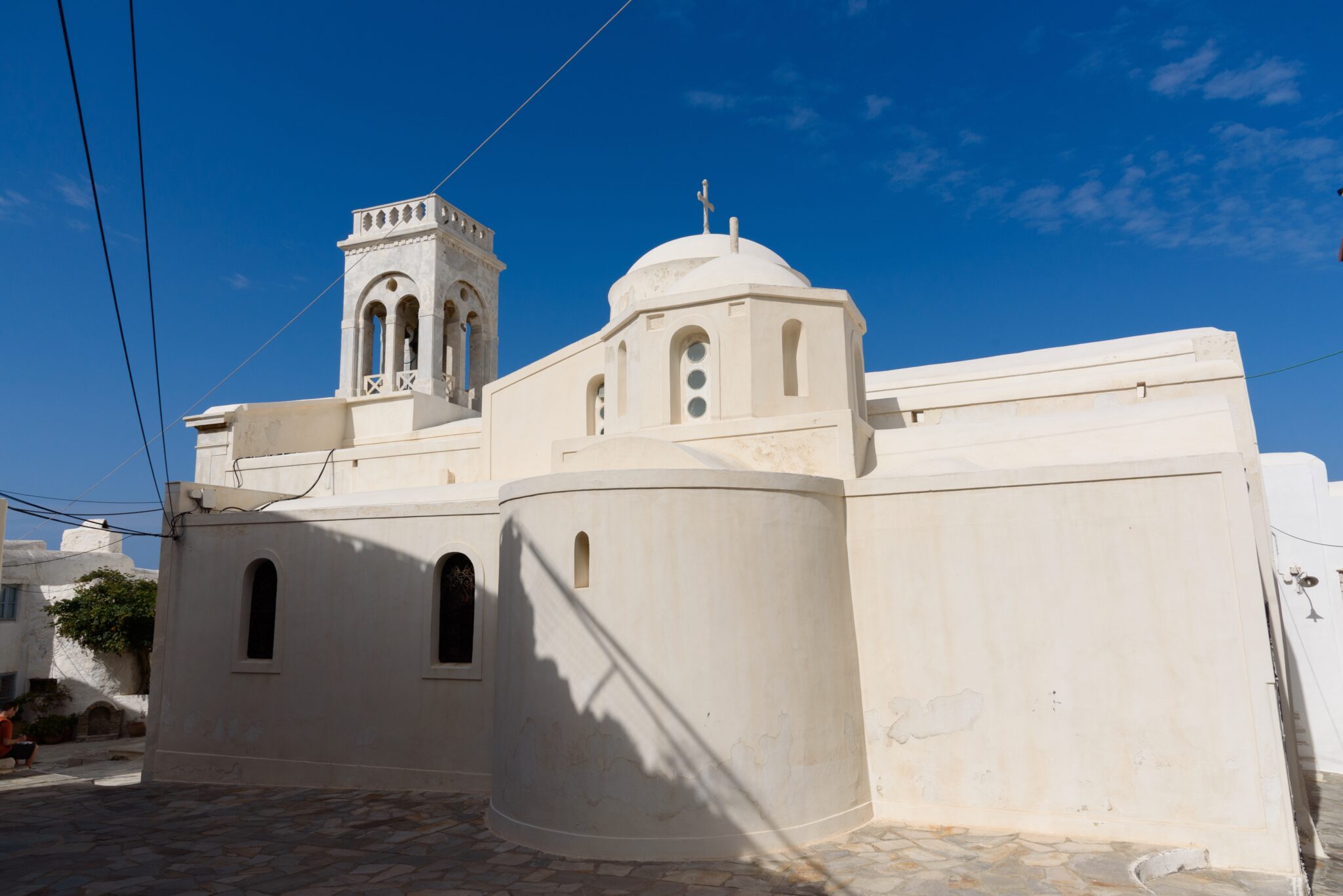As the ferry approaches Naxos Town, the giant Portara gate greets visitors as it has done for 2,500 years. The monumental doorway to nowhere stands on the islet of Palatia and faces north to Delos, and it is the entrance of an unfinished temple to Apollo. Began about 530 BC by the tyrant Lygdamis who boasted that he would build the mightiest, tallest buildings in Greece, he was overthrown in 506 BC and the temple was never completed.
By the 6th century AD it had been converted into a church, and in the Venetian and Ottoman eras it was dismantled so that the marble could be used to build the Kastro. Portara, built from four blocks of stone 5 metres long and weighing 20 tonnes each, was too large to demolish so it stands today as a ghostly gateway to the island.
North of Palatia, some underwater remains of Cycladic buildings are found at Grotta, and this is also where the Mycenaean city of Naxos was located with a series of large worked stones, a waterfront quay and a series of steps that folklore says leads to a tunnel that leads to the temple at Portara.
Heading into Naxos Town, the Chora is a bewildering maze of twisting cobblestone streets, arched porticoes and majestic doorways. The Old town is split into two sections, the lower Bourgos and the upper Kastro, still inhabited by Venetian Catholic nobility. Bourgos, derived from the Italian borgo meaning outside the fortress, was just that; it was the bourgeois district of the town inhabited by middle-class Venetians and Greeks. It was marked out by three gates – the Porta tou Gialou which bore the Crispi coat of Arms of three rhombi decorated with vine leaves, Exobourgo where the Church of Prophitis Ilias now stands, and at Pyli tis Evriakis which was the entrance to the Jewish quarter.
A stroll through the narrow alleys of Bourgos is like entering a labyrinth with unanticipated dead ends and streets that are shaded in cool darkness and suddenly explode with glorious sunshine. The houses combine to form an intricate wall which was the first wall of defence for the Kastro.
Kastro was originally built with three gates, two remain to this day; the southernmost is called Paraporti, side gate, but it is more interesting to enter through the northern entrance, Trani porta, strong gate, via Apollonos Street. The doorway has a vertical incision on the marble pilaster; this was a Venetian measure for the bolts of cloth that tradesmen brought to the noblewomen inside the city. Step through the gateway and enter another age where elegant Venetian mansions cluster around sleepy courtyards, their lintels emblazoned with coats of arms and walls adorned with climbing flowers.
The Della Rocca Barozzi Tower ahead hosts cultural events and performances in its garden as part of the Domus Festival, while next to it is the Tower of Crispi, the last surviving of twelve towers of the medieval fortress. Initially housing Jacobo, the illegitimate son of Duke Guillermo I Crispo, it later belonged to the Barozzi family whose coat of arms adorn the main entrance, and finally it passed to the present owners, the Glezos, whose descendants of the Italian aristocracy live in the tower today.
On the way to the central square is the Catholic Cathedral. Built by Marco Sanudo, the Venetian founder of the Duchy of the Archipelago, within the walls of Kastro in the 13th century, it was later restored by wealthy Catholic families in the 16th and 17th centuries. The marble floor is paved with tombstones bearing the coats of arms of these eminent benefactors- Crispi, Barozzi, Delatola, Coronelli, Lorentani and Grimaldi. A three-aisled domed basilica, the whitewashed church is the seat of the Roman Catholic Archbishop of Naxos, Tinos, Andros and Mykonos. The icons are a mix of western and Byzantine influences with a double-sided one depicting the Virgin Mary and John the Baptist older than the church itself, and another showing the Virgin of the Rosary surrounded by members of the Sommaripa family whose house is nearby.
An uphill street leads to the Naxos Archaeological Museum. In a handsome Venetian building from the 17th century that served as a Jesuit school, the five floors house the findings from many years of excavations on the island. The Cycladic civilisation was at its peak in the 3rd millennium BC and Naxos was a centre for art with settlements along the east coast and at Grotta. The white marble Cycladic statues range from the early simple violin shapes to more detailed forms with folded arms and tilted heads. There is an impressive collection of Mycenaean pottery, gold jewellery, classical statues and a mosaic floor depicting a Nereid riding a bull.
Read also:
Naxos cheeses pledge a unique gustatory experience
A Triumvirate of Tasty Stops on the Greek Island of Naxos
Naxos: Sandy beaches and lush mountains



